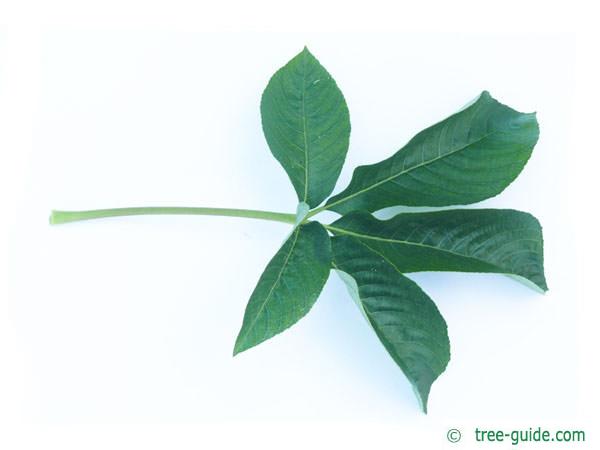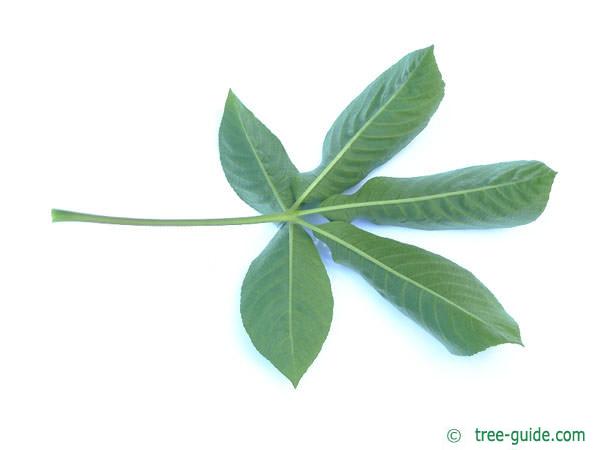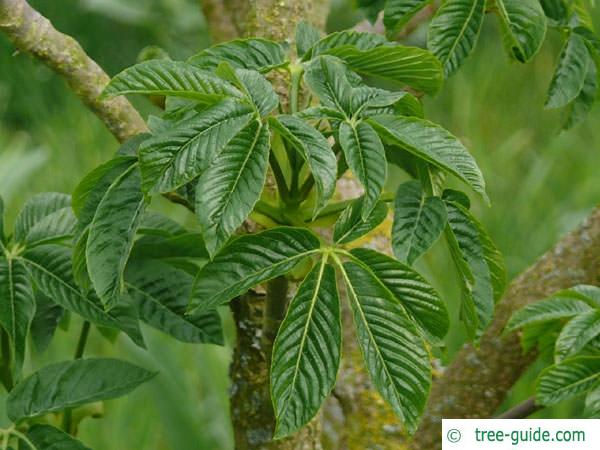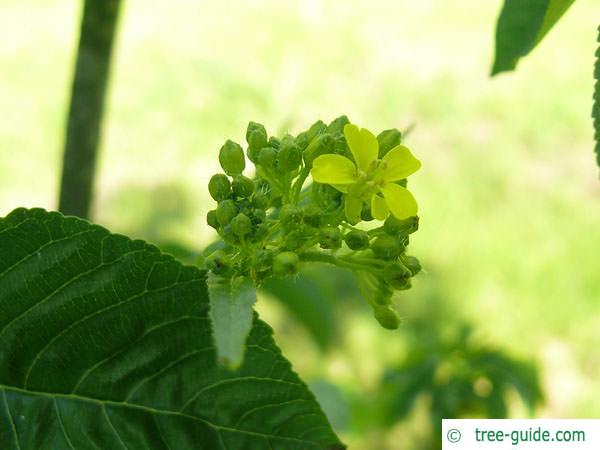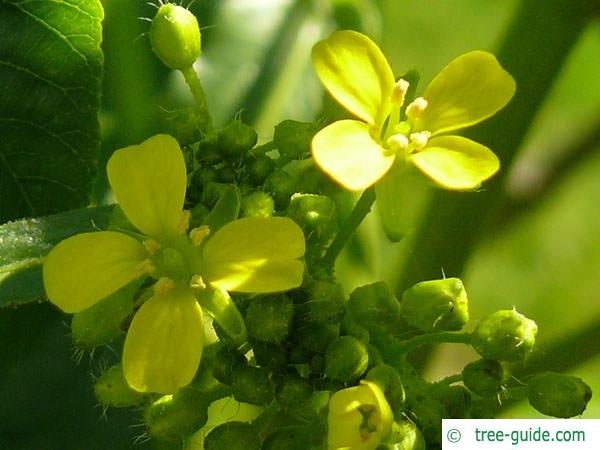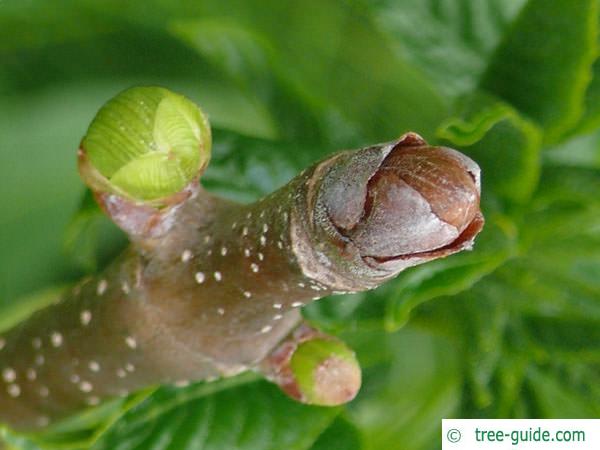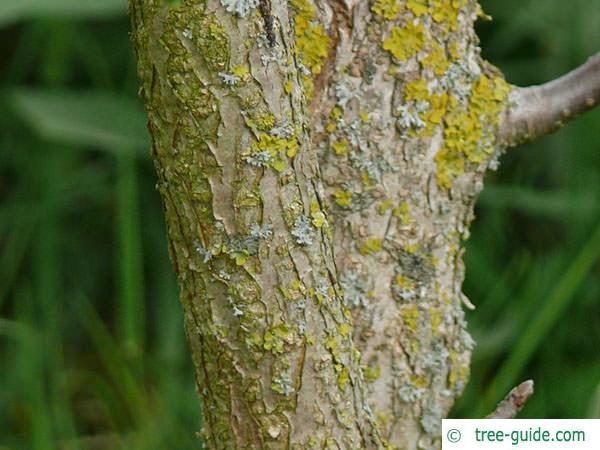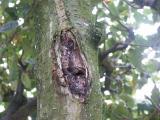Basisdaten
The California buckeye originally comes from California and the southwest of Oregon. The tree is often multi-stemmed.
Tree profile
The leaves of California buckeye are palmately compound with five (rarely seven) leaflets. The leaflets are 6 - 17 cm (2.4 - 6.3 in) long. The petiole is long. The leaf margin of the leaflets is toothed.
The inflorescences are upright piston-like (flower candle) The inflorescences up to 20 cm (7.9 in) high. The flower color is white to pink.
The seeds are surrounded by a green fleshy and spiky capsule. The seeds are brown, glossy and up to 4 cm (1.6 in) in diameter.
The twigs are light brown with lenticels.
single tree, in America forest tree
Buckeyes additional information
overview leaves | overview blossoms
overview fruit | overview trunk
overview winter | overview trees







